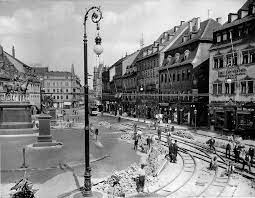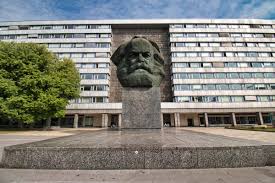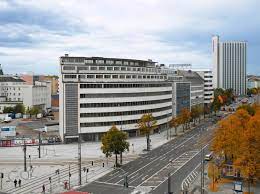|
|
Chemnitz (Karl-Marx-Stad), Germany, Europe |
|
|
|
|
|
|

Chemnitz at the end of
the 19th century
source: https://www.skyscrapercit
y.com/threads/germany-at-
the-end-of-the-19th-centu
ry-before-wwii-historical
-photos.196145/page-117

Karl Marx statue
source: https://wildeast.blog/en/
karl-marx-stadt/

Chemnitz today
source: https://www.metalocus.es/
en/news/schocken-building
-mendelsohn-restored-chem
nitz
|
Chemnitz is a long-standing market town with an illustrious history. In 1883, Chemnitz became a city with over 100,000 residents, and just 30 years later this figure had risen to 320,000. However, the city was subject to heavy allied bombing during World War II, destroying key industries in oil and automobile manufacturing and killing 4,000 residents. Post-war, modest low rise housing was constructed in the now Soviet occupied East Germany.
In 1952, the GDR established the city of Karl-Marx-Stad as an idealist socialist city. Modern Plattenbau buildings were prioritised over the preservation of older historic ones, resulting in many of them falling into disrepair and even dereliction. The town continued to be a prominent player in machine construction up until the 1990’s.
In 1990 the town was renamed Chemnitz and a re-planning of the city was ordered while East Germany suffered from mass migration to the west. Shopping facilities on its peripheries were constructed to compete with West German cities. Hundreds of partially historic buildings were levelled to facilitate the revamp. Now, much of the centre has been restored and its 244,000 residents eagerly await becoming European Capital of Culture 2025.
source: https://en.wikipedia.org/wiki/Chemnitz |
|
2008 - 2024 disclaimer
|

